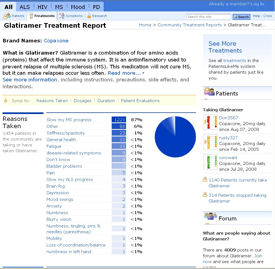Alaska primary care crisis is tip of the iceberg
When the safety net us already stretched, losing even one internist can leave a community in crisis.
After four decades in private practice in Anchorage, Alaska, internist Keith Brownsberger, MACP, began to think about hiring another physician so that he could edge into semi-retirement. But a severe shortage of primary care physicians in Anchorage combined with the rising expense of running a practice led him to put that plan on hold.
“My overhead is now 60% of revenues, and the more time I take off, the higher it goes,” says Dr. Brownsberger, whose panel is 80% Medicare patients. One of the three physicians in his group practice recently left for a position at the local Air Force base because of the unattractive overhead-revenue relationship in private practice.
“Long-term planning is out of the picture,” he said. “I was asked to sign a three-year lease on the office and agree to a 6% yearly increase, and I said no. I'll sign a one-year lease and see how things look next year.”
It takes more than a couple of tough years for committed physicians such as Dr. Brownsberger to throw in the towel, but for many the tipping point has arrived. Fed up with Medicare reimbursement volatility and unwilling to continue absorbing the difference between their fees and what it costs to care for beneficiaries, many of the region's internists are either limiting their Medicare patients or opting out altogether—a major problem in a city of 275,000 with only 20 general internists to care for a growing elderly population.
And while the shortage may be more acute in remote Anchorage, primary care physicians across the U.S. are leaving their practices in varying numbers due to the same disparity between what Medicare pays for patient care and what it costs to care for them.
According to ACP's Internal Medicine Workforce Data for 2007, 21% of internists who were board certified in the 1990s have left internal medicine, compared with only 5% of those who elected internal medicine subspecialties. Worse, only 14% of first-year internal medicine residents planned to go into general internal medicine. In the 2008 annual resident match, nearly 1,000 of the 4,858 internal medicine positions offered went unfilled, according to the Association of American Medical Colleges (AAMC), and the percentage of graduates who cited general internal medicine as their career choice declined from 54% in 1998 to 23% in 2007.
With fewer graduates coming into primary care, many communities are hard hit by the loss of experienced physicians, said Fred Ralston, FACP, chair of the College's Health and Public Policy Committee.
“In my area [Fayetteville, Tenn.] and many in the country, many communities are just one [general internist] retirement away from a crisis,” he said.
Primary care freeze-out
In Anchorage, remaining primary care doctors are limiting the number of Medicare patients they will accept, leaving new Medicare beneficiaries scrambling to find a physician. Many end up using the local emergency department or the Neighborhood Health Center, which often can't handle the increased load.

“On any given day, we turn away 20 people, and many are Medicare [age] patients who can't find a physician,” says Thomas Hunt, MD, the family physician who heads the Anchorage Neighborhood Health Center, the public-health safety net provider and one of the hundreds of government-funded federally qualified health centers throughout the country. The clinic turns away patients for overcrowding and too few providers to meet the growing need for services, “And the local senior advocacy group lets us know when one of [its] clients can't get in to see a provider.”
The crunch is hitting Anchorage's major local hospital, too.

“We are receiving increasing calls from Medicare patients who can't find a physician,” says Roy Davis, MD, chief medical officer at 341-bed Providence Alaska Medical Center. Providence is also seeing a decrease in self-pay patients at the hospital, a big-picture barometer, he added. “I'm concerned that those patients are not seeing anybody because they can't afford the ER and they can't get in to a Medicare provider.”
The recent elimination of proposed Medicare cuts scheduled for July 1 and the July 2008 announcement of a 35% reimbursement increase for Alaska primary care providers is being viewed as a welcome stopgap measure by local physicians and elected officials who helped push for the pay increase. But in the end, it's perhaps too little, too late, say some physicians.
“I think the increase will soften the blow, but it's not the answer, by any means,” said Dr. Davis, who favors pushing forward with ACP's patient-centered medical home concept before the situation worsens (see ).
“Somehow general internists need to be compensated for what they do—soon,” agreed Scott Kerns, MD, who recently closed his private practice in Salem, Mass. “Most of us have been providing the stability of a medical home for our patients for decades—at our own expense.”
Broken business model
Even long-time internists who pride themselves on caring for any patient who needs them, adopt a firmer stance these days about how many Medicare patients they'll see, said Dr. Ralston.
“Would you want to do a 10-year business plan for a medical practice where every six to 18 months the core financing was challenged and required an act of Congress to make sure it remained stable?” he asks. “I wouldn't, but I do—and that's scary.”
Poor and unstable Medicare reimbursement and generally stagnant incomes both contribute to the flight from general internal medicine and young physicians' reluctance to enter the field, said Dr. Ralston. On top of that, practicing generalists are protecting their practices by keeping their Medicare patient numbers to 40% or less.
Dr. Kerns closed his private practice last May after 31 years. He has since moved to a practice owned by North Shore Medical Center (formerly Salem Hospital). Declining Medicare reimbursement was a major reason for his decision to leave, he said.
“It reached the point that 57% of my patients were Medicare,” he said. “I didn't have enough inflow revenue to pay my staff.”




